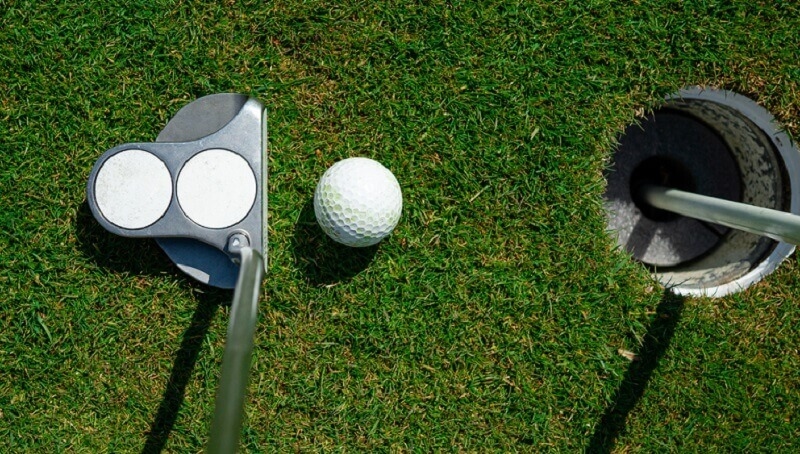
Close
Selecting the right putter is crucial for any golfer aiming to enhance their short game. The choice can significantly influence accuracy, control, and overall performance on the green. Among the myriad of options available, the debate between single vs. double bend putters stands out. Both designs offer unique advantages, and understanding their nuances can be the key to unlocking a golfer's full potential during those critical putts.
Golfers often find themselves at a crossroads when choosing between single and double-bend putters. Both have distinct designs, and their construction can significantly influence a player's stroke.

The single-bend putter is characterized by its shaft, which typically inserts directly into the putter head. This design offsets the putters face, allowing golfers to position their hands in front of the club. The bend in the shaft aids in this offset, ensuring the face remains square at impact, leading to straighter shots.
While the single-bend putter offers numerous advantages, it's essential for golfers to understand its limitations and choose a design that complements their natural stroke.

In the context of dynamic golf warm-ups, understanding equipment is crucial. The golfing world is rife with debates, and the one between single-bend and double-bend putters is no exception. Both putters have their unique characteristics, and the choice often boils down to individual preferences and playing styles.
The TaylorMade Spider EX Single Bend stands out in the single bend category. It boasts a mallet head construction that offers advanced MOI, ensuring a square face at impact and increased accuracy. The putter also features a co-molded pure roll insert, providing a soft feel and promoting a consistent roll for superior distance control. Its design and features make it a top choice for mid to high handicappers with a straight stroke.
The PXG 0211 Lightning Putter is a gem for those leaning towards the double bend design. Its mallet head is packed with weight around the face, increasing MOI and resisting twisting during the stroke. This design ensures that the ball starts on the intended line, making it a favorite among high handicappers.
Single bend putters are characterized by their shaft inserting directly into the head, promoting a straight stroke. In contrast, double-bend putters often feature mallet designs, promoting straighter strokes but with a different aesthetic appeal.
For players aiming to master golf distance control with a straight back and through stroke, both putters can be effective. However, those seeking a cleaner look might prefer the single bend, while those needing more forgiveness might lean towards the double bend design.
The world of golf putters is vast and varied, with face-balanced putters being one of the most discussed types among enthusiasts and professionals alike.
Face-balanced putters are designed such that when the shaft is balanced on a finger or set on a flat surface, the putter face points directly upwards. This design ensures that the putter face remains square to the stroke path during the putt, making it ideal for players with a straight back and through stroke. The significance lies in its ability to resist twisting, ensuring consistent and accurate putts.
Yes, most single-bend putters are face-balanced. Their design inherently promotes a straight stroke, and the face-balanced nature complements this by resisting any unwanted rotation of the clubface during the stroke.
A slant neck putter features a hosel that slants from the shaft towards the putter head, creating a slight offset. This design is often associated with a moderate toe hang, making it suitable for players with a slight arc in their stroke.
While both slant neck and single bend putters aim to improve putting accuracy, their designs cater to different stroke types. Single-bend putters, being face-balanced, are ideal for straight strokes. In contrast, slant neck putters, with their slight toe hang, cater to golfers with a mild arc in their stroke. The similarity lies in their goal: to enhance alignment and improve the consistency of putts.
The plumbers neck is a design where the hosel has a distinct bend, resembling the shape of a pipe, creating an offset between the shaft and the putter face.
Double bend putters are characterized by two distinct bends in the shaft, positioning the putters head behind the hands and aiding in face balance. This design is often associated with mallet putters and is suitable for straight strokes.
On the other hand, plumbers neck putters, with their unique bend, offer a slight offset, promoting a forward hand position and catering to players with a slight arc in their stroke. In terms of performance, while double bend putters offer stability and resistance to twisting, plumbers neck putters provide enhanced alignment and feedback, making them a favorite among many tour professionals.
You may also like: Revitalize Your Game: Learn How to Regrip a Golf Club
Navigating the intricate world of golf putters can be daunting, but understanding the nuances of each design is pivotal. Whether you're a novice or a pro, selecting the right putter can significantly elevate your game. Dive deep into each type, align it with your stroke, and watch your performance soar.
This content was created by AI